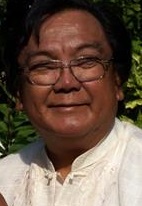Exploring family-friendly Copenhagen

The Little Mermaid bronze statue at Copenhagen’s Lagelinie promenade. It was unveiled to the public in 1913. Photos by Wendell Gaa
The new Disney film “Frozen” is set to open in theaters on November 27. Based on the classic children’s fairy tale “The Snow Queen” by Hans Christian Andersen, “Frozen” is just one of a handful of Disney animated adaptations of stories by the famed Danish author, and its timely opening has me feeling sentimental about my trip just last summer to the city once called home by Denmark’s most internationally well-known storyteller, Copenhagen.
Andersen was born in the town of Odense, but it was in Copenhagen where the world was first exposed to his enchanting storytelling. This fact alone enticed my desire to explore the city’s highlight attractions.
Upon arriving at the airport and leaving towards our hotel, I looked outside our taxi window and noticed how Copenhagen is entirely flat like much of Denmark, and everywhere there were bicycles, the ubiquitous form of mass transport for individual Danes, which I found quite amusing. I saw young and old alike biking in their own reserved lanes along the streets, some for pleasure and most for their daily commutes to school and work. This was no doubt the most biker-friendly city in all of Europe and anywhere in the world which I’ve traveled to so far.
My parents and I decided to walk around our immediate vicinity and saw cobblestone streets which are so typical of well-preserved old towns in most European cities. There were brick townhouses nearly everywhere, similar to the ones we’ve seen in Amsterdam, save for the fact that Copenhagen lacks an elaborate canal network.
We then experienced something that Copenhagen is renowned for, its international cosmopolitanism, which we experienced when eating at the city’s different ethnic restaurants. Whatever international cuisine comes to mind, Copenhagen would most likely have it, such as Thai, Italian, American and Middle Eastern food. When dining at some of these different restaurants, we observed a diversity of people, from Filipino domestic helpers who have been residing in Denmark for many years, to young African immigrants who have integrated into Danish society so well, that it was fascinating to see them mingling and conversing with their Nordic peers so fluently in the Danish language, no doubt a reflection of Denmark’s policy of ethnic and social tolerance.
Our bus excursion showed us that while the city may be lacking in tall skyscrapers, its history is nonetheless rich. It was truly mesmerizing to think that this city was a Viking fishing village back in the 10th century, and it eventually became the capital of Denmark at the beginning of the 15th century. It was then under the reign of the Danish King Christian IV during the 17th century that it became a prominent political, commercial and cultural center in Scandinavian Europe.
We then disembarked at the waterside of Copenhagen’s Langelinie promenade to view the city’s icon, the Little Mermaid statue. Inspired by Andersen’s fairy tale heroine, this bronze statue was designed by sculptor Edvard Eriksen and was unveiled to the public in 1913. While not immense or daunting, I could see how this statue is a source of pride for the Danes, and it was sad to think that throughout the years it has been a favored target of vandals who have defaced it time and again.
Fortunately, I didn’t notice any damage anywhere on the statue, at least on the surface. I’m hoping that city authorities and the public alike are keeping tabs on the welfare of the Little Mermaid, for everyone’s sake.
Other sites which we got to view from our bus was the Neo-baroque-style Christiansborg Palace, which is at the central part of town and houses the Danish Parliament, the Danish Prime Minister’s office and the Danish Supreme Court. Nearby we also got to see the Copenhagen City Hall, an attractive National Romantic-style building which serves as the hub of the Lord Mayor of the Copenhagen Municipality and its council.
As our bus tour ended, my Dad and I concluded the day by walking through the Tivoli Gardens, the second oldest amusement park in the world! Opened in 1843, this theme park is the Disneyland of Denmark, with a unique local cultural flavor. Walking around we saw lovely gardens overlooked by replicas of oriental-style buildings designed with Chinese and Indian architectural style. We even saw a charming man-made lake with a pirate ship, resembling those 18th century-style ships at the Pirates of the Caribbean attraction at Disneyland.
There was even this indoor audio-animatronic ride where guests are literally transported to the fantasy worlds depicted in Hans Christian Andersen’s fairy tales, hence the Danish version of Disneyland’s It’s A Small World. Without a doubt, the Tivoli Gardens is just one of the prime reasons that Copenhagen deserves its reputation as one of most family-friendly cities on earth.

The author’s father, retired Ambassador Willy Gaa, tours the Tivoli Gardens, the Disneyland of Denmark and the second oldest amusement park in the world.











